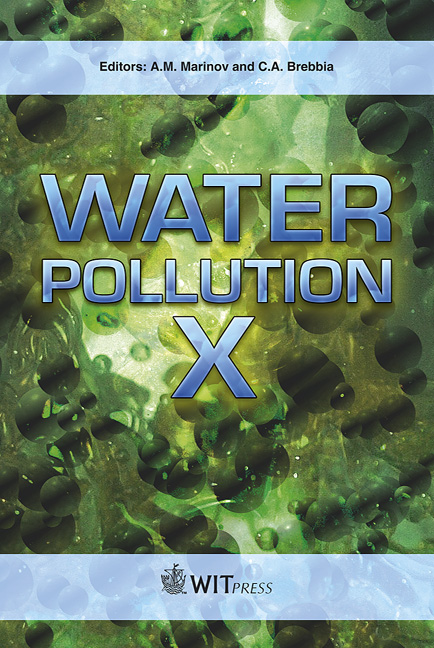Waste Water Treatment Plants As Redistributors Of Resistance Genes In Bacteria
Price
Free (open access)
Transaction
Volume
135
Pages
12
Page Range
83 - 94
Published
2010
Size
330 kb
Paper DOI
10.2495/WP100081
Copyright
WIT Press
Author(s)
M. Gómez, M. T. Díaz, M. Araujo, R. Sueiro & J. Garrido
Abstract
The aim of this study was to assess the number of both extended-spectrum -lactamases (ESBL) producing Enterobacteriaceae and vancomycin-resistant enterococci (VRE) present in the inflow (hospital and urban sewage) and effluent waste water treatment plant (WWPT) and receiving waters. The results show that the average counts of ESBL producing Enterobacteriaceae in hospital sewage were much higher (more than 2.5 logs) than those observed in urban waste water. On the other hand, the sewage treatment plant studied did not perform well in removing pathogenic microorganisms. Although Enterobacteriaceae concentrations were reduced in the final effluent by almost two log units as compared with the crude sewage concentrations, a high number of Enterobacteriaceae were detected in the effluent, representing a risk for microbiological pollution of water resources. A strong increase in ESBL-producing bacteria in the receiving water was detected after effluent discharge WWPT. The results obtained have also demonstrated that the hospital sewage releases a high concentration of VRE (> 3.0 x 105 CFU/100 ml), which represents 25% of the total population of enterococci presents in these waters. The hospital sewage contains a proportion of VRE 10 times higher in comparison with that detected in the urban sewage. The VRE proportion in the urban sewage was very low (2.6%) and constant along the different samplings. In the other hand, sewage discharged from municipal sewage treatment plant effluent also increased the VRE proportion in the river Sar water (1.5% of EVR in upstream to 3.8% downstream from the plant). In conclusion, sewage (particularly hospital sewage) contains a high proportion of ESBL producing Enterobacteriaceae and vancomycin resistant enterococci, implying a potential risk of spreading these
Keywords
β-lactamases, drug resistance, ESBLs, hospital and urban sewage, Enterobacteriaceae, vancomycin-resistant enterococci





